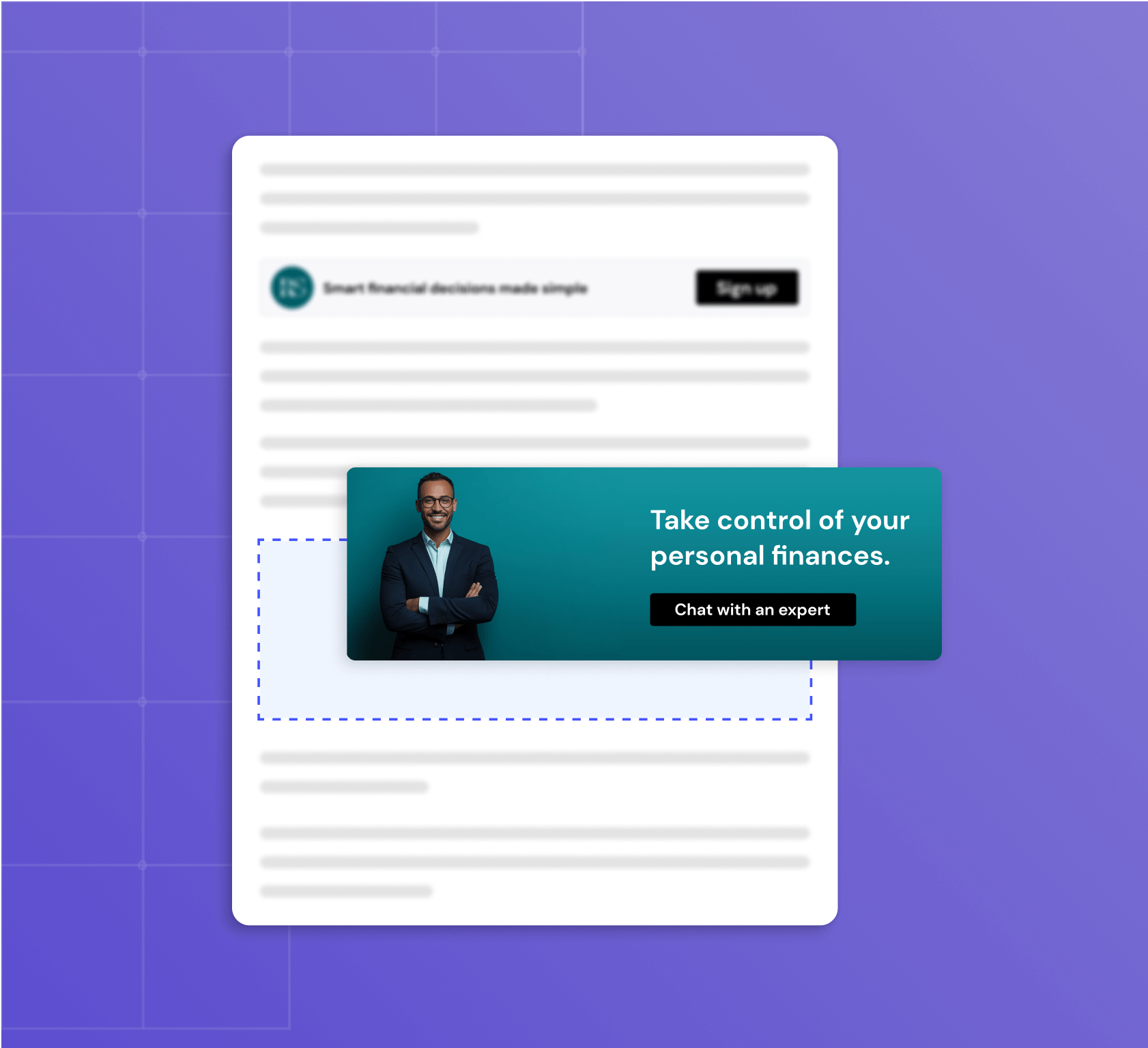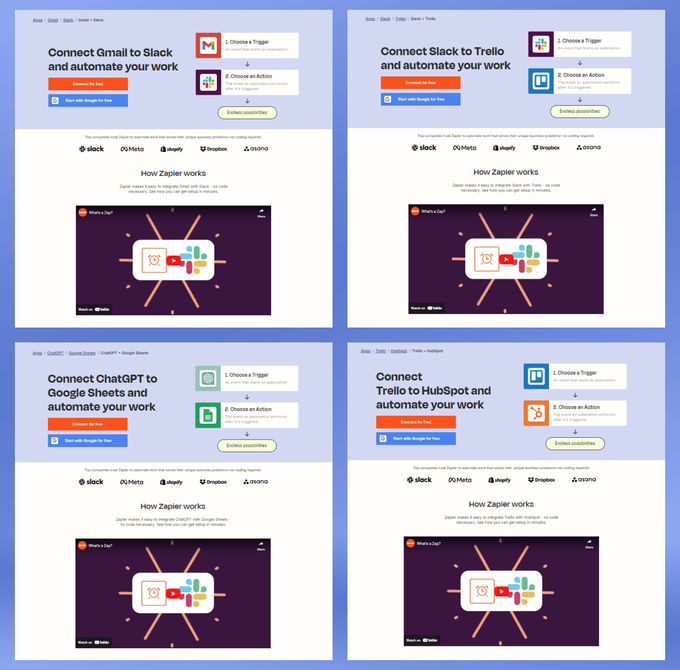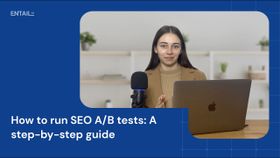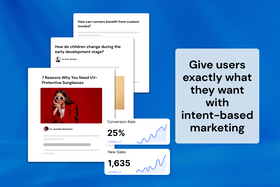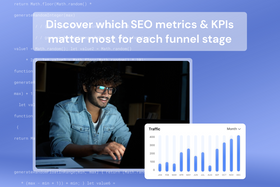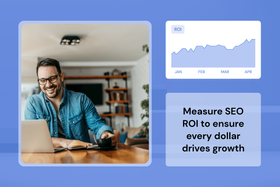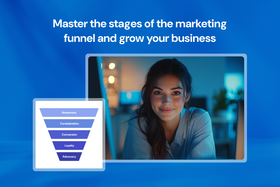9 proven techniques to improve SEO ROI
Learn how to maximize your SEO ROI with actionable techniques that drive growth and boost conversions.
Updated November 27, 2024

Almost every website has a blog, and most companies invest in content and SEO in one way or another. But while marketing departments measure return on investment (ROI) from other marketing channels, they don't measure SEO ROI in the same way because it's more complicated. Still, they invest a lot into SEO, knowing it performs for a long time, offers many conversion opportunities, and often yields a better ROI than paid channels.
But how do you leverage that potential effectively to get the best possible ROI from SEO? Having built strong content operations for our clients and ourselves, we've learned what works—and I'm breaking down the techniques that can help you maximize your SEO ROI.
Key takeaways
- Most websites have traffic on their blog but not the tools to convert and measure at the same level as paid channels.
- SEO often has better ROI than other channels because you create content once, which continues to perform over time.
- By properly adding CTAs to your content, you can send users down the funnel and achieve a high CTR.
- Attribution is a challenge in SEO ROI because users interact with multiple touchpoints, but you need to find a solution.
1. Add contextual widgets to your content
I'm starting with this technique because you probably already have content you can optimize. Optimizing your existing content is the simplest and most cost-effective step to improving SEO ROI.
The principle we use here is that when users read content and see calls to action (CTAs) or links that are highly relevant to what they're reading, they're much more likely to click on them. In fact, we've seen click-through rates (CTR) above 45% when CTAs are contextually relevant and well-placed. So, the first step is to look at each content piece and add CTAs, links, or widgets directly related to each section or paragraph.
If the links guide users to the next step in their journey, you can dramatically increase CTR and boost conversions. Depending on the context, you can link to articles further down the funnel, product pages, or your home page. Tools like Entail CRO make this easier by helping you connect users to the right content at the right funnel stage.
» Select, customize, and position widgets within your content pages. Try Entail CRO for free.
2. Solve attribution before anything else
In marketing, we often say, "If you can't measure it, don't build it," and one of the main challenges with SEO ROI is accurately measuring conversions.
But what exactly counts as a conversion? It could be a user landing on your blog, exploring your site, and completing your marketing goal—whether that's purchasing a product or booking a demo.
Conversions can be categorized as first touch, assist, or last touch:
- First touch: The user starts their journey with your content and converts later.
- Assist: A user comes through another channel, engages with your content, and then converts.
- Last touch: The user's final interaction before conversion is with your content.
» Learn to optimize complex user journeys for conversion with multi-touch attribution.
User journeys are rarely straightforward and involve multiple "touches" or interactions across different pages, making them difficult to measure. Most analytics tools just aren't built for that. You can use Google Analytics or Mixpanel if you want to measure one page, but they fall short when it comes to tracking complex user journeys across multiple pages. That's where Entail CRO comes in. It uses its attribution model to determine each page's exact contribution to your bottom line.
3. Map your bottom-of-the-funnel keywords
Once you've mastered the first two techniques, you will have created a baseline to help you get the most out of your existing content and traffic. The next step is mapping out all the relevant keywords for your website and targeting the bottom-of-the-funnel keywords with the highest conversion potential. For example, Zapier sells integrations between products, so their bottom-of-the-funnel keywords would be "Gmail Slack integration" or "how to integrate Slack and Monday."
It's crucial to target bottom-of-the-funnel keywords first to ensure your website ranks for them, even if you rank very low. Of course, competition for these keywords is high, and many SEOs shy away from them to target low-competition keywords instead. But if you're focused on improving ROI, you have to target keywords with the best chance of converting first.
There are two main reasons for this:
- Bottom-of-the-funnel keywords are usually related to your core offering, so creating content based on them helps Google understand what your website is about.
- Even if you don't rank for this content organically, you can use internal linking to send traffic to these pages from other sources.
» Get content strategy software that maps all your topics and their funnel stages.
4. Create content to support your bottom-of-the-funnel pages
After covering your bottom-of-the-funnel keywords, create content to support them. This includes near-bottom, mid-funnel, and even top-of-the-funnel content that links back to your bottom-of-the-funnel pages. By doing this, you add authority and send traffic to those pages.
This is how you build SEO funnels. The golden rule here is that every page should link to relevant content at the same funnel stage or one stage lower. Websites often have bottom-of-the-funnel CTAs in top-of-the-funnel content where users aren't ready to convert yet, and that's not best practice. Instead, link to other upper-funnel or mid-funnel content to educate and nurture the user through their journey. You can start linking to bottom-of-the-funnel content (i.e., product or feature pages) in the middle of the funnel or below.
5. Add non-SEO pages to your funnel
The next technique is to create pages that aren't necessarily focused on SEO but still support the user's journey toward conversion. For example, after bringing a user in with an SEO-optimized article, you can continue to engage them with other content—like the kind you might promote through Taboola or PPC. This content may not rank for SEO but still contributes to the user journey.
This strategy is part of SEO ROI because it can help increase the conversions you get from your traffic. For example, if Zapier has an article on "how to integrate Gmail and Slack," they can follow it up with articles on "best Slack integrations" or "best Gmail integrations." Even if these pages aren't made for SEO, they can keep users in the same context and push them further down the funnel.
» Learn how to create content to support the user journey.
6. Leverage programmatic SEO
Another technique is using programmatic SEO to build bottom-of-the-funnel pages. Again, Zapier is a great example of this. They understood that most people search for specific integrations, not for Zapier itself. So, they created many pages, each targeting a different integration people might search for, such as "Gmail Slack integration," "Slack Trello integration," "ChatGPT Google Sheets integration," or "Trello HubSpot integration."
They recognized the patterns and similarities between these pages and used automation to generate them, which allowed them to quickly create a huge number of pages that target various bottom-of-the-funnel searches like the ones below.
Programmatic SEO improves ROI in two ways. First, it covers all the bottom-of-the-funnel topics by creating content for each. Second, it reduces content creation costs through automation. Generating many pages at a lower cost increases your chances of achieving a better ROI.
» Book a consultation with an SEO expert to find out if programmatic SEO is a good option for your site.
7. Create more types of bottom-of-the-funnel pages
People with high intent to purchase often want to compare products. That's where top 10 pages and comparisons come in handy. Review pages are another good option because they can draw in users who want more information before making a purchase decision. Similarly, alternative pages can capture users searching for alternatives to a product and position your offering as the better choice. These types of bottom-of-the-funnel pages target high-intent searches and can lead to more conversions.
For example, Zapier can target searches like "best integration tools," "Zapier vs. Make," "Zapier review," and "Zapier alternatives" to create bottom-of-the-funnel pages. If these pages provide genuinely useful insights, they can attract organic traffic and convert users who reach them through internal links on other pages, as people looking to compare products are often ready to buy.
» Create any type of content page with Entail's page builder.
8. Promote your content using paid channels
Another technique is to use paid channels or other traffic sources to boost your SEO ROI. Even though we're talking about SEO, you can send traffic to your content using email marketing or paid campaigns on Google or Facebook. Since SEO ROI is tied to the content itself, sending traffic from different channels to content that converts can increase your return.
» Discover actionable strategies to convert blog traffic.
If your content is optimized for conversions—with relevant widgets, proper attribution models, and links to bottom-of-the-funnel content—you can use paid campaigns to target top-of-the-funnel searches. These upper-funnel keywords are often cheaper to target because they're less competitive. By sending paid traffic to these pages and linking properly, you can drive more conversions and improve SEO ROI.
» Discover whether SEO or PPC is a better investment.
9. Use SEO ROI tools
Improving SEO ROI can be challenging, so using an SEO ROI tool can simplify the process. Entail CRO helps by creating and embedding contextual widgets on your pages and solving the attribution model, so you know exactly where your sales are coming from. Plus, Entail's content strategy software maps out all your topics and their funnel stages, allowing you to see where the conversion opportunities are and forecast SEO ROI. It also tells you which pages should link to others.
Get more ROI from your SEO
SEO is one of the most difficult channels to measure when it comes to ROI, yet it offers some of the best long-term returns. Recognize the potential already on your website, solve any challenges that get in your way, and make strategic moves to convert your traffic more effectively. That way, you can unlock a channel that provides continuous growth and a better ROI than any other.
» Discover whether SEO ROI can always be measured.
